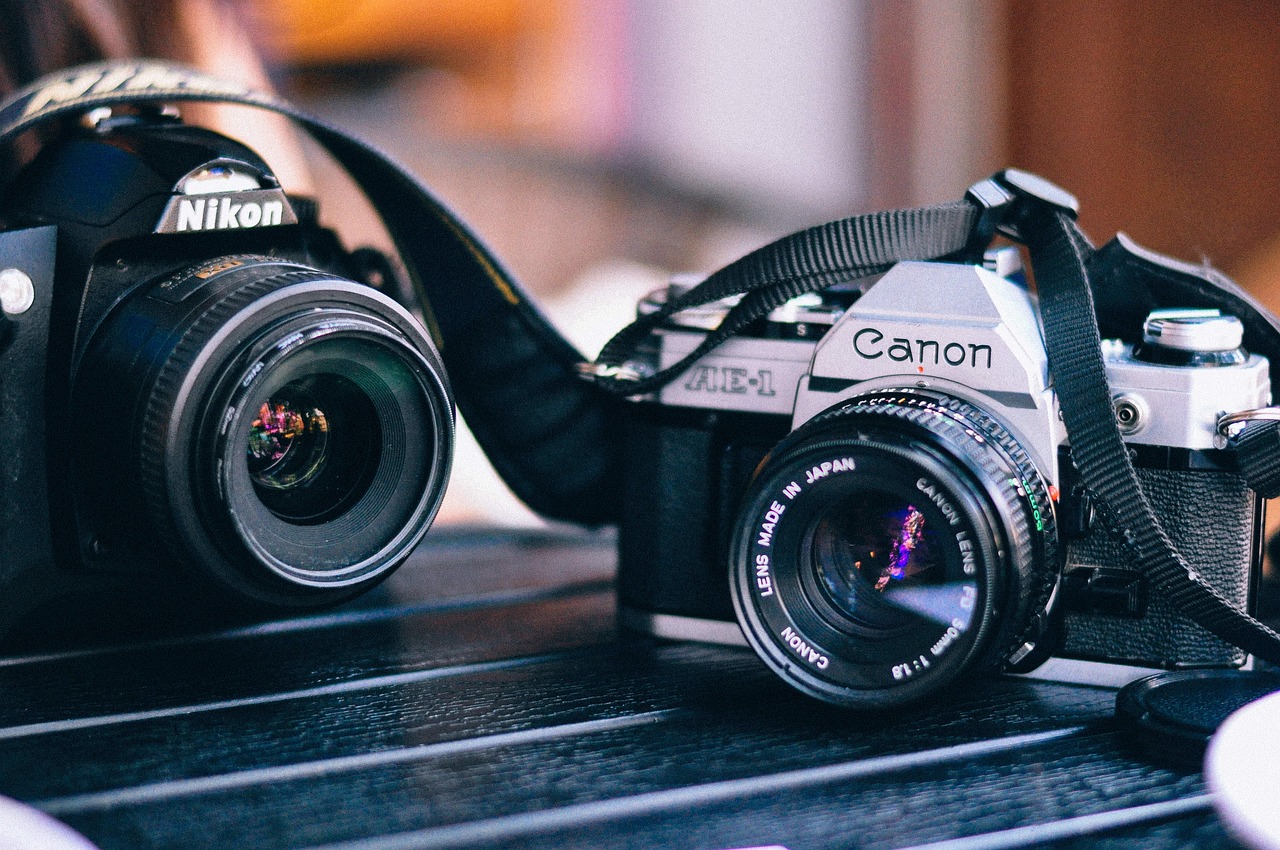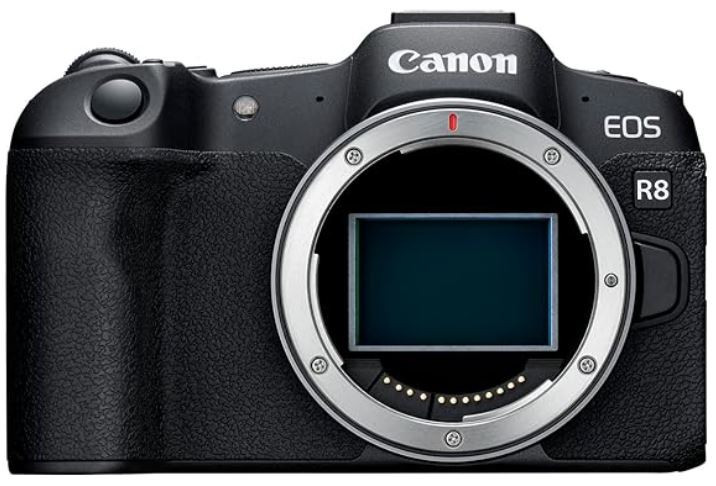I’m here to help you navigate the age-old rivalry between two titans of the camera world: Canon and Nikon. This isn’t just a matter of brand preference; it’s about finding the right tool to capture your vision perfectly. Canon and Nikon have been at the forefront of photographic innovation for decades, shaping the industry with their cutting-edge technology.
You’re going to find out about the storied histories of both companies, from their humble beginnings to their rise as global leaders in photography.
Did you know that Canon started its journey in the 1930s as a small laboratory dedicated to making high-quality cameras? And Nikon, which originated around the same time, initially focused on precision optics. Over the years, they’ve both earned their stripes and built loyal followings.
Today, both brands offer a plethora of cameras that cater to all levels of photography, from beginners snapping their first shot to professionals capturing masterpieces. The great Canon versus Nikon debate isn’t just about which camera takes sharper pictures—it’s a deeper discussion about lenses, ergonomics, color science, and much more.
So, why does this debate persist? It boils down to each brand’s unique approach to camera development. Canon is often praised for its color science and user-friendly interface, while Nikon is revered for its superior ergonomics and build quality. But that’s not all there is to it, and choosing a side isn’t straightforward.
In my opinion, the ‘best’ brand is the one that feels right in your hands, aligns with your shooting style, and fulfills your creative needs.
As we move forward, I’ll walk you through a technical showdown where we’ll pit Canon against Nikon on specs alone. Hold onto your lenses—we’re about to get up close and personal with the defining features of these camera giants.

Technical Comparison: Unveiling the Specs
Now, let’s get down to brass tacks. When you’re comparing Nikon and Canon cameras, talking specs is absolutely crucial.
We’re not just looking at megapixels here; it’s about how every component and feature complements your photography. Each brand brings something special to the table, so let’s lay out what’s under the hood.
Nikon cameras are often celebrated for their exceptional sensor quality. With large sensor sizes and high megapixel counts, they promise detailed images that charm both amateur and professional photographers alike.
Canon, on the other hand, has been a trailblazer in introducing innovative sensor technologies, such as their renowned Dual Pixel CMOS AF which ensures rapid and smooth autofocus.
Speaking of autofocus, this can make or break your shot. Nikon’s systems are known for their reliability, particularly when tracking moving subjects.
Canon has made significant strides too, offering competitive AF systems that provide crisp shots even in rapid-action scenarios.
In terms of design, if you pick up a Nikon or a Canon, you’ll feel the difference immediately. Nikon tends to go for a chunkier grip, which some find offers more stability.
Canon’s design is sleeker, arguably catering to users looking for something slightly more compact without sacrificing ergonomics.
And for those who venture into the night, low-light performance is key. Nikon’s sensors typically offer a broader dynamic range, which can be a game-changer when capturing shadows and highlights. Canon’s recent models have closed the gap significantly, though, with impressive ISO capabilities.
Lastly, let’s talk about video. Canon has historically had the upper hand with superior video autofocus and a diverse range of mirrorless options catering to videographers. Nikon has been playing catch-up but is rapidly gaining ground with improved video features in their newer models, like the Nikon Z series.
Each of these specs paints a part of the picture. But remember, the specs sheet doesn’t tell the whole story. It’s the experiences and endorsements of the photographers who use this gear that really brings its value to life. And that’s what we’re going to explore in the next section.

Photography Community Insights: What Pros Say
When it comes to the Nikon vs. Canon debate, professional photographers have their preferences, and these choices are often based on hard-earned experience. Their insights can be invaluable for both amateur and seasoned photographers alike.
In conversations with pros, you’ll find there are die-hard fans of both Canon and Nikon. Each brand has its evangelists who cite specific features or experiences that keep them loyal.
Canon is often praised for its color science, which many feel delivers skin tones that are exceptionally pleasing straight out of the camera. On Nikon’s side, many commend its dynamic range, making it a powerhouse for landscape and low-light photography.
When I’ve looked at surveys about brand preference among photographers, the results typically show a close split, but it’s not just about numbers.
The reasoning behind preferences can range from the tactile feel of the camera in one’s hands to the customer service experiences or the brand’s evolution over the years.
One of the aspects that often comes up is the choice of lenses and how each brand’s specific optics can affect the signature ‘look’ of the images produced. For instance, the bokeh rendition in Nikon’s prime lenses is sometimes mentioned as a differentiator.
Similarly, sports photographers may advocate for Canon’s super-fast autofocus in its telephoto lenses. Complexion rendering, autofocus speed, heft, and user interface are just a few of the factors that these photographers take into account when aligning with a brand.
But it’s not just about the intangibles; some professionals have a very practical approach, basing their choice on the robustness of the camera system against demanding conditions, versatility in a variety of shooting scenarios, or even the investment they’ve already made in lenses and gear.

Brand-specific features can also play a significant role, such as Canon’s Dual Pixel autofocus or Nikon’s highlight-weighted metering.
So why do these insights matter for someone choosing a camera? For starters, they highlight the importance of real-world use over specifications on paper. What might seem negligible on a datasheet could mean the world when shooting under pressure.
These viewpoints also underline that while both Nikon and Canon offer competitive features, each has its distinct strengths that cater to different needs and preferences.
If you’re starting to lean towards one brand or another, hang tight. In the next section, we’re going to explore the ecosystems surrounding both Canon and Nikon, specifically their lenses and accessories, which are crucial components to consider for long-term satisfaction with your photography toolkit.
Ecosystem and Upgradability: Lenses and Accessories
I’m going to break down the ecosystems of Nikon and Canon for you, focusing on lenses and accessories. Let’s be clear, the camera body you buy is just the beginning. The lens system is where things can’t get really exciting.
You’re going to find out about Nikon’s F-mount and Z-mount lenses and Canon’s EF, EF-S, and RF lenses. Each of these mounts has a range of lenses that cater to different needs, whether you’re into landscape, portrait, wildlife, or macro photography.
In my opinion, the ability to use third-party lenses can be a game changer. Companies like Sigma and Tamron make lenses for both Nikon and Canon, providing you with even more options.
Don’t worry too much about compatibility; both Nikon and Canon offer adapters to use older lenses with newer camera models, which means your investment in lenses won’t go to waste even if you decide to upgrade your camera body down the line.
Choose something that resonates with you when it comes to accessories. From flash units to battery grips, both brands offer a variety of proprietary accessories.
Moreover, there’s an abundance of third-party options that could save you some money without compromising on quality.
A lot is happening very quickly in the mirrorless realm, especially for these two photography giants. If you’re leaning towards the newest tech, make sure to check out the mirrorless options and their respective lens lineups – Nikon’s Z series and Canon’s R series are leading the charge there.
Both Nikon and Canon have made upgrades relatively straightforward within their ecosystems. But just don’t focus too much on perfection right off the bat.
Start with what you need, grow from there, and be assured that you can always switch things up with these adaptable systems.

Making Your Choice: Factors to Consider Beyond Brand Loyalty
You’re going to find out about the importance of aligning your camera choice with your specific photography or videography goals.
It’s not just about whether you choose Nikon or Canon but also about how the camera’s features serve your creative aspirations.
Cost versus performance is a critical factor to weigh. I’ll guide you through considering how much you’re willing to invest against the benefits you’re getting in return. Choose something that resonates with you and fits within your budget.
The resale value and what the second-hand market looks like are often overlooked. That’s going to include understanding how well your camera holds its value over time and what opportunities might arise if you decide to upgrade.
You can always adjust your approach down the road as you gain more experience and clarity about what you want.
I strongly recommend getting some hands-on experience with both Nikon and Canon cameras before making a purchase.

Visit a store or borrow from a friend. That firsthand feel might just be the tiebreaker you need.
A lot is happening very quickly in the world of photography, and staying informed is key. Above all, choose a camera that you feel comfortable with, one that will grow with you as you develop your skills.
I really hope that you find the perfect fit—a camera that not only captures stunning images but also captures the essence of why you fell in love with photography in the first place.





This blog post provides a comprehensive overview of the Canon versus Nikon debate, acknowledging the rich histories of both companies and delving into technical specifications, community insights, and the ecosystems surrounding their cameras. The author’s emphasis on personal preference, shooting style, and creative needs resonates well, highlighting that the ‘best’ brand is the one that feels right in your hands.
As a friendly piece of advice, I would suggest prospective buyers consider their specific photography or videography goals, weighing the balance between cost and performance. The post wisely recommends getting hands-on experience with both Nikon and Canon cameras before making a decision, emphasizing the importance of a camera that not only captures stunning images but also aligns with the essence of one’s passion for photography.
Staying informed about the rapidly evolving world of photography is crucial, and the post encourages readers to choose a camera that will grow with them as they develop their skills. Overall, it’s a well-balanced and informative guide for those navigating the intriguing world of Canon and Nikon cameras.
Thank you for your response, JR! I appreciate you taking the time to read the article and for your insight!